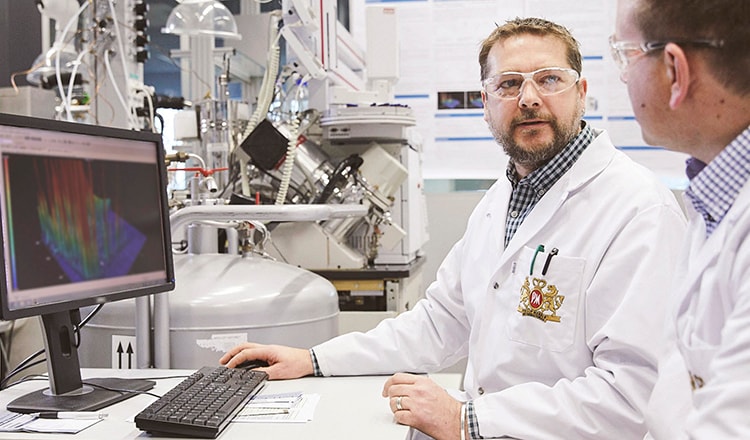Explore the groundbreaking science behind our smoke-free journey
When it comes to science and research, we set ourselves the highest standards, and our scientific methods are inspired by the pharmaceutical industry. We share our scientific findings publicly and encourage others to review our work.
Our vision is to offer adult smokers who don’t quit a better choice than continued smoking, and to transform for good. How are we making this vision a reality? By developing and delivering a portfolio of better alternatives to smoking that provide nicotine without burning tobacco, and which adult smokers find satisfying.
Tobacco harm reduction

Our vision is to offer adult smokers who don’t quit a better choice than continued smoking,
We're evolving our portfolio to include products beyond tobacco and nicotine.

The problem with burning
Everybody knows smoking cigarettes is addictive and causes serious disease
But not everyone knows why
The main problem is the smoke produced when tobacco is burned.
Cigarette smoke contains more than 6000 chemicals.
Nicotine is just one of them and while not risk-free, it is addictive.
But it's not the primary cause of smoking-related diseases.
Around 100 of the chemicals in cigarette smoke have been classified as causes or potential causes of smoking-related diseases.
Dr Serge Maeder, Global Head of RRP System Innovation, speaks to camera:
All the studies performed on cigarette smokes show that they contain number of toxicants and these toxicants are created when we burn the tobacco.
And these toxicants are linked to different diseases.
The cause of the disease are the toxicants found in smoke and in turn they're caused by the fact that we burn tobacco.
That's why we have spent over nine billion dollars creating a portfolio of smoke-free products which significantly reduce the levels of harmful chemicals compared to cigarettes.
Our scientifically substantiated products deliver nicotine without burning tobacco.
Nicotine containing alternatives while not risk-free offer adult smokers who would otherwise continue to smoke a satisfying experience while being less harmful compared to cigarettes.
Word appears on screen reading:
Smoke-free products are not risk-free and provide nicotine, which is addictive.
The best choice any smoker can make is to quit tobacco and nicotine altogether, but those adult smokers who don’t, deserve access to and information about smoke-free alternatives.
Philip Morris International logo is seen on-screen above the words delivering a smoke-free future.

The difference between tobacco, smoke & nicotine
Title: What's The Difference Between Tobacco, Smoke And Nicotine?
Upbeat instrumental music starts
Tobacco is a plant which naturally contains nicotine.
Nicotine is addictive and not risk free.
But it is not the primary cause of smoking-related diseases.
It is the smoke produced from burning tobacco that is the main problem.
Tobacco smoke contains over 6,000 chemicals. Nicotine is one of them.
Around 100 of these chemicals are classified by public health experts as causes or potential causes of smoking-related diseases.
The best choice any smoker can make is to quite cigarettes and nicotine use altogether.
Smoke-free alternatives are only for adult smokers who would otherwise continue smoking.
They are not risk-free and contain nicotine, which is addictive.
Music ends

The difference between cigarette smoke and smoke-free product vapor
Title: What’s the difference between an e-cigarette and a heat-not-burn product?
E-cigarettes vaporize a flavored liquid solution.
The solution is aerosolized and the generated aerosol-commonly referred to as ‘vapor’ – is inhaled.
E-cigarettes liquids usually contain nicotine, but they do not contain tobacco.
Heat-not-burn products always use tobacco.
They heat the tobacco without igniting it to release the flavor and the nicotine
Neither devices burn tobacco,
So they should release significantly lower levels of harmful and potentially harmful chemicals compared to a traditional cigarette.
*This is subject to scientific substantiation on a product by product basis.
As a result they are a much better choice for adult smokers than continued smoking.
The best choice any smoker can make is to quit cigarettes and nicotine use altogether.
Smoke-free alternatives are only for adult smokers who would otherwise continue smoking.
They are not risk-free and contain nicotine, which is addictive.

What is nicotine?
Percussion music starts
Title: What is nicotine
Nicotine occurs naturally in tobacco leaves and can be extracted by heating, burning or soaking the plant
Nicotine is addictive but is it not the primary cause of smoking related diseases.
Once inhaled, it is absorbed straight into the bloodstream where it travels through the body and to the brain
Nicotine binds itself to specific receptors and triggers the release of dopamine, which boosts attention but could also cause reward-seeking behavior.
Nicotine has short-term pharmacological effects, including increased heart rate and blood pressure.
It can take anywhere between 2 and 18 hours for nicotine to leave the body.
Nicotine should never be taken by adolescents, pregnant women or people with heart conditions
The best choice any smoker can make is to quit cigarettes and nicotine use altogether.
Smoke-free alternatives are only for adult smokers who would otherwise continue smoking.
They are not risk-free and contain nicotine, which is addictive.
Music ends







